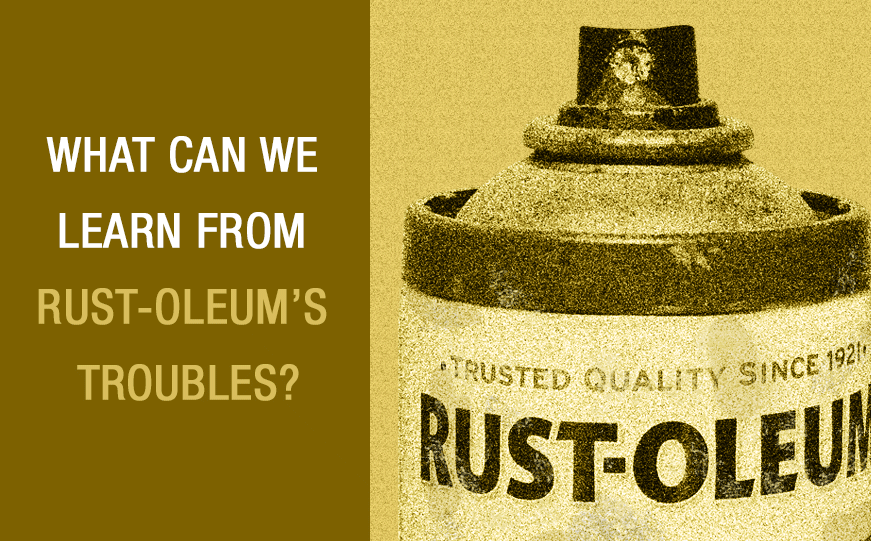Ah, the good, old days of advertising.
You used to be able to make unsubstantiated, but mostly plausible, claims about the capabilities of your product. You could use copy like “Twice the Coverage!” in a yellow starburst to get consumers’ attention. It wasn’t necessarily completely accurate, but it made the point that your product does more than expected.
Not anymore.
Today, you’re expected to be accurate and transparent with your claims (unless you’re a politician, but we digress), lest a competitor log a complaint with the NARB and you get slapped with some sanctions.
That’s exactly what’s happening to Rust-Oleum with their Ultra-Cover 2X spray paint. Sherwin Williams, a competitor, challenged the claim that the product offered twice the coverage of other paints.
Sherwin Williams made the challenge to the National Advertising Review Board, who referred the matter to the Federal Trade Commission. While the details of the case are too thick to get into here, and the case is making its way through the courts, there is a larger lesson to discuss.
Making a deeper connection
Look, we get it. Spray paint isn’t exactly the sexiest product category in the world, and companies like Rust-Oleum have to do what they can to set themselves apart.
One of the ways they choose to do that is by improving the formula so they can make claims about the product’s performance. They use technical terms like “more solids and pigments” and “made with Double Cover technology.”
But this kind of approach has become tiresome. Claims like those made by Rust-Oleum have become meaningless, and any company can make similar-sounding claims. Consumers have neither the time nor the interest in determining what claims are true, and naturally look at them with skepticism.
So what’s a brand like Rust-Oleum to do?
We’ve said it before, and we’ll continue to say it until we don’t think it’s necessary. Making a deeper connection with consumers — through storytelling, through emotions, focusing on their needs — is far more effective than touting features and benefits.
Consumers are bombarded with claims and product features and benefits. They’ve heard it all and they’re skeptical. Even if a brand’s claims are 100 percent ironclad the truth, consumers may not believe it, because anyone can make those claims.
What sets a brand apart is reaching your audiences on a personal level, basing your sales and marketing alignment not on how great your product is, but what customers use it for. How it solves their problems, enhances their lives, or delivers a positive experience.
Now, we’re being a little hard on Rust-Oleum. Still, it’s an opportunity to make an important point.




